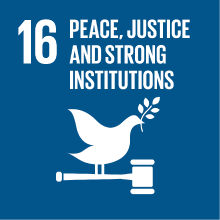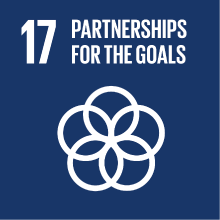THE ARTISTIC HERITAGE OF ISLAM: FROM RESEARCH TO VALORISATION
- Academic year
- 2019/2020 Syllabus of previous years
- Official course title
- IL PATRIMONIO ARTISTICO DELL'ISLAM: DALLA RICERCA ALLA VALORIZZAZIONE
- Course code
- LM2230 (AF:308354 AR:168471)
- Teaching language
- Italian
- Modality
- On campus classes
- ECTS credits
- 6
- Degree level
- Master's Degree Programme (DM270)
- Academic Discipline
- L-OR/11
- Period
- 2nd Semester
- Where
- VENEZIA
- Moodle
- Go to Moodle page
Contribution of the course to the overall degree programme goals
Expected learning outcomes
Pre-requirements
Contents
Referral texts
AAVV, The Azhar Park Project in Cairo and the Conservation and Revitalization of Darb al-Ahmar, The Agha Khan Trust for Culture, on-line publication (pdf)
M. T. Bernhardsson, Archaeology and Nationalism in Iraq, 1921-2003, in R. Boytner, L. Swartz Dodd, B. J. Parker (eds), Controlling the Past, Owning the Future, Tucson, 2010, pp. 55-67 (pdf)
Stella Casiello (a cura di), La cultura del restauro. Teorie e fondatori, Marsilio, Venezia 1996 (biblioteca BAUM): LIMITATAMENTE AGLI ARGOMENTI TRATTATI.
Joachìn Marìa Còrdoba, On the Iraq Museum and Other Assaults Brief News about the Plundering of lraqi Museums and the Systematic Looting of lraqi Archaeological Heritage, ISIMU III, 2000 (publication date?), pp. 15-22 (pdf)
R. Daher e I. Maffi, Introduction, in R. Daher e I. Maffi (a cura di) The politics and practices of cultural heritage in the Middle East, London 2014, pp. 1-38 (pdf)
Chiara Dezzi Bardeschi, Archeologia e Conservazione, Milano 2007: “Il dibattito sull’autenticità”, pp. 227 e 230 (pdf)
Marco Dezzi Bardeschi, Il valore discriminante dell'autenticità prima e dopo Nara, ANAGK, n. 52, 2007, pp. 70- 73 (pdf)
M. Diaz-Andreu, Guest editor's introduction. Nationalism and archaeology, Nations and Nationalism 7 (4), 2001, 429-440 (pdf)
EMEK SHAVEH (ONG), TheTemple Mount/ Haram al-Sharif – Archaeology in a Political Context, pubblicazione on-line (http://alt-arch.org/en/ ) (pdf)
Finbarr Barry Flood, Idol-Breaking as Image-Making in the ‘Islamic State’, Religion and Society: Advances in Research 7 (2016), pp. 116–138 (pdf)
Ömür Harmanşah, ISIS, Heritage, and the Spectacles of Destruction in the Global Media, in Near Eastern Archaeology, Vol. 78, No. 3, Special Issue: The Cultural Heritage Crisis in the Middle East (September 2015), pp. 170-177 (pdf)
B. Junod, G. Khalil, S. Weber, G. Wolf, Islamic Art and the Museum, London, Saqi, 2012: Introduction, pp. 11-16 (pdf)
Daniele Manacorda, Il sito archeologico: fra ricerca e valorizzazione, Roma, Carocci, 2007: cap. 2, pp. 15-32; capp. 4-5, pp. 82-121 (pdf)
Paolo Matthiae, Prima lezione di archeologia orientale, Roma-Bari, 2005: capp. 1 e 2 (pdf).
David Shankland, Afterword: Heritage, Nationalism and Archaeology in the Republic of Turkey, in S. Redford and N. Ergin (eds.), Perceptions of The Past in the Turkish Republic: Classical and Byzantine Periods, Leuven, 2010, pp. 225-236 (pdf).
A. D. Smith, Authenticity, antiquity and archaeology, Nations and Nationalism 7 (4), 2001, pp. 441-449 (pdf).
Cristina Tonghini, Archeologia medievale e archeologia islamica, Archeologia Medievale, n. speciale 2014, pp. 33-40: solo il capitolo 1 (pdf).
Stephen Vernoit, The rise of Islamic archaeology, Muqarnas, 14, 1997, pp.1-10 (pdf)
Lauso Zagato, Simona Pinton, Marco Giampieretti, Lezioni di diritto internazionale ed europeo del patrimonio culturale, Venezia 2017 (BAUM)
Assessment methods
A) 35% of final mark
The student is required to submit an essay at least one week before the day of the oral examination, on a an archaeological site of his/her choice, agreed with the teacher. The student can also decide for a presentation on the same topic. In this work the student will have to show that he/she has acquired the necessary critical skills and tools to understand the research (historical-political context, method, results) and the programme of protection and enhancement of the site. The work must be in two parts. The first will summarise the results of the research carried out on the site; the second will highlight aspects relating to the conservation and enhancement of the site, and will provide a personal assessment.
B) 65% of final mark)
During the oral exam, students will be asked to illustrate some of the topics covered in the lesson, with the help of images. This part of the exam aims to verify that the student has acquired basic knowledge of the subjects and case studies discussed, and adequate critical skills to deal with their study.
Type of exam
Teaching methods
2030 Agenda for Sustainable Development Goals
This subject deals with topics related to the macro-area "International cooperation" and contributes to the achievement of one or more goals of U. N. Agenda for Sustainable Development


